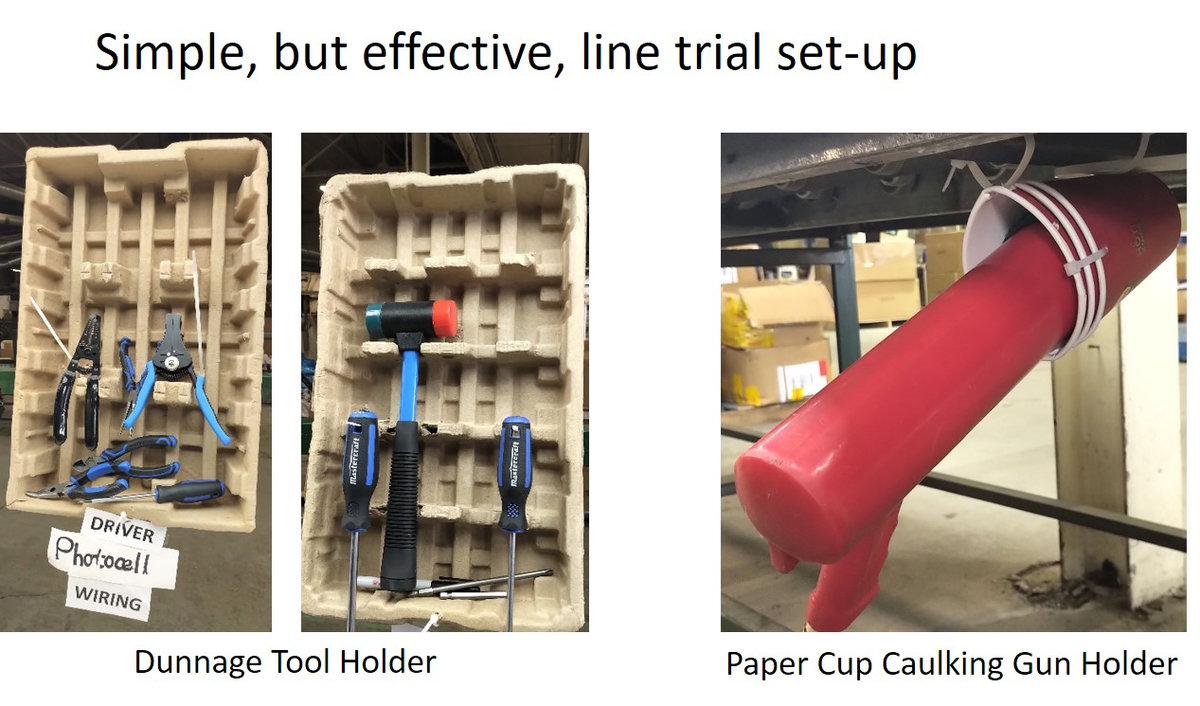|
One of the things I’ve always loved is the simple kaizens (continuous improvement). I was reminded of this recently working with RAB Design Lighting when the team there was conducting some line trials. Having coached the team on the importance of detailed trial planning and real-as-possible process set-up, but also the need to be balanced with simplicity, low cost, and high flexibility, I was thrilled to see their creativity and ingenuity that met these two potentially conflicting criteria. See examples in the pictures below.

The two criteria mentioned above is important because you want a trial to simulate the real line conditions as much as possible, however, things will definitely change as you learn more. So you don’t want to invest time and money building/buying a lot of things that may not actually be used in the permanent line or that may require several iterations of changes to get just right.
When conducting line trails careful planning is necessary. Planning such as: Clearly defining the purpose of the trial is critical. Determining what are you trying to prove, disprove or discover. Setting up the line to simulate as close as possible what the actual real line will look and feel like. Protecting the trial from “noise” or other things that can negatively impact or distract from the purpose of the trial. Although some of these things maybe real, you should try and isolate them from initial trials if they are not directly related to the purpose. There is a time and place to allow real time disruptions and abnormalities but not in early trials. Identifying and defining the number of trial observers, their roles, responsibilities and tracking needs. Deciding on what metrics to track and measure throughout the trial and who is going to do that. Scheduling, taking into account breaks, lunches and shift end, is also important.
Trials are to experiment and learn. They can also be a great deal of fun along the way!
|



